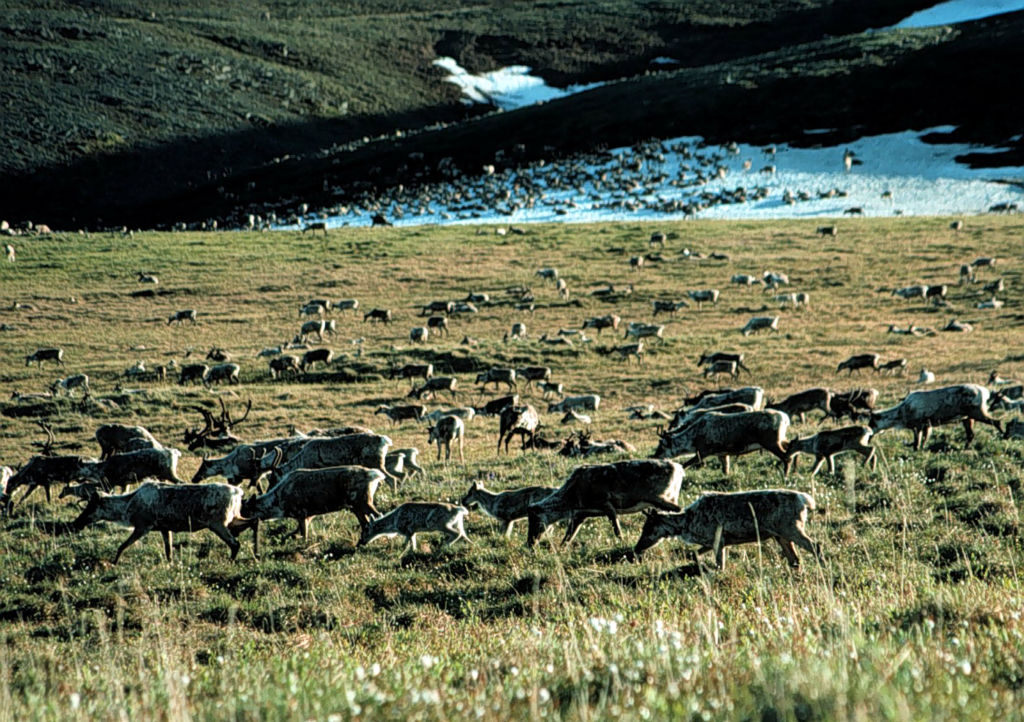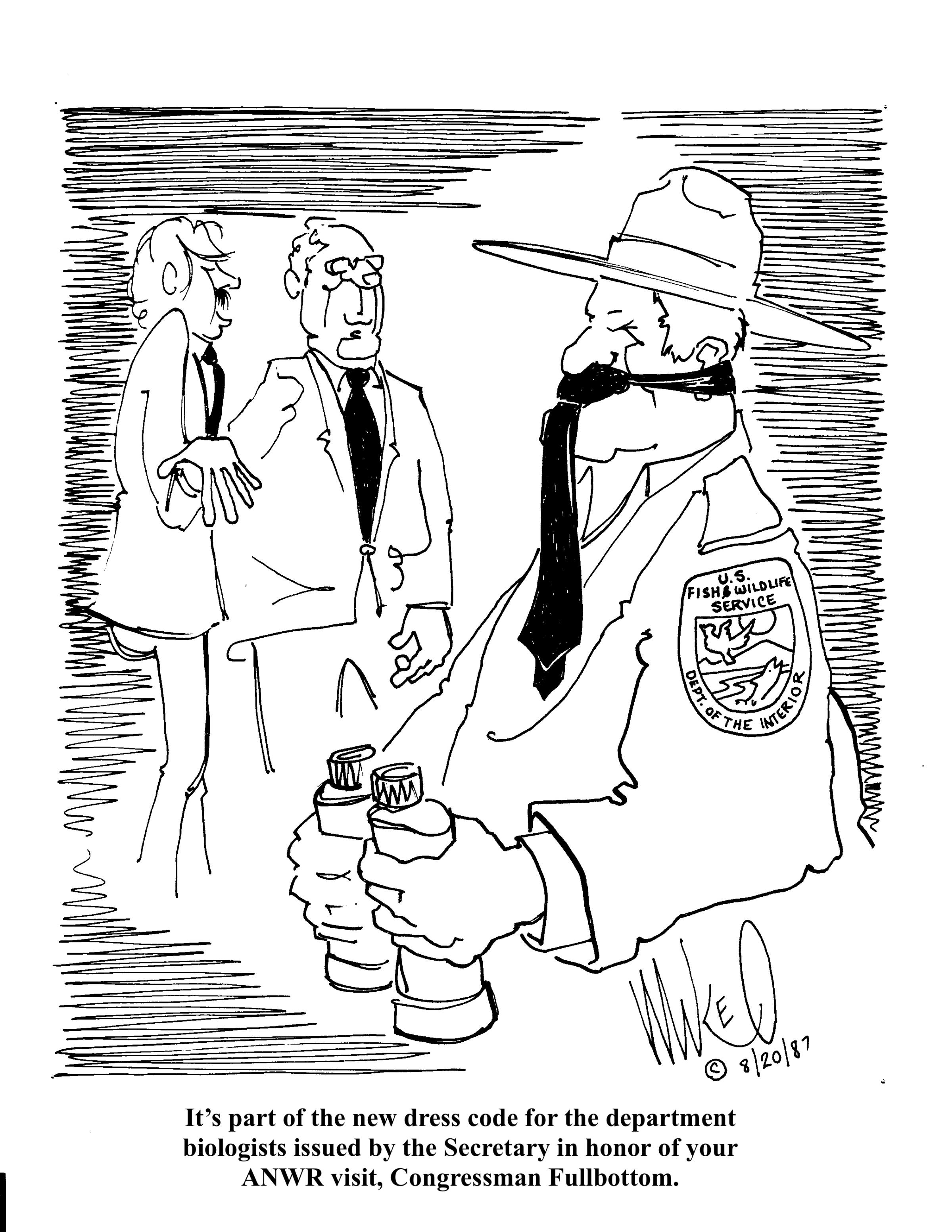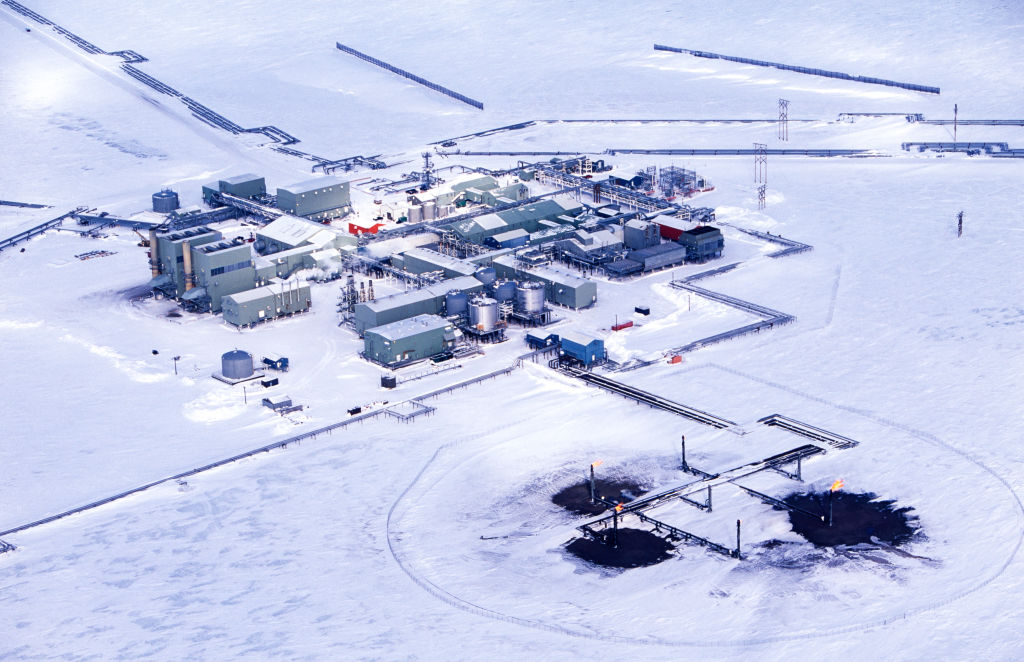
In September 2023, Secretary of the Interior Deb Haaland canceled the remaining fossil fuel leases in Alaska’s Arctic National Wildlife Refuge, auctioned off during the waning days of the Trump administration. Denouncing the oil and gas leasing program as “seriously flawed,” Haaland emphasized the “insufficient” environmental review conducted by Trump’s Interior Department. Interior officials had sold off drilling rights to the Arctic Refuge while willfully ignoring scientific evidence about the potential impacts of fossil fuel development.
Yet the Trump Administration was merely following a playbook devised more than three decades before. Throughout the long debate over the Arctic Refuge, drilling proponents have ignored or sometimes altered data, weaponizing science to support their push for fossil fuel development. Meanwhile, government scientists, who patiently spent years completing rigorous studies of wildlife habitats, found their research warped or misrepresented in the rush to turn the refuge’s coastal plain into an industrialized oil field. From Reagan to Trump, successive Republican administrations subverted democratic processes by manipulating and suppressing Arctic science.
Read More: When It Comes to Climate Change, There's No Such Thing as a New Normal
The story began in 1980 with passage of the Alaska National Interest Lands Conservation Act (ANILCA)—a landmark environmental law signed by President Jimmy Carter that established the 19-million-acre Arctic Refuge. Although the law designated much of the refuge as permanent wilderness, it left the 1.5-million-acre coastal plain in legislative limbo; a future Congress would have the authority to grant the area permanent protection or allow oil drilling. ANILCA instructed the U.S. Fish and Wildlife Service (FWS) to produce biological baseline studies to give Congress the information it needed to decide the fate of this land.
Among the things they studied was caribou biology. Government scientists sought to understand why the Porcupine caribou herd—one of the largest in the world—always migrates to the Arctic coastal plain to have their young. They found that the area contained three features that caribou mothers and calves needed at birth: abundant plant life providing high-quality nutrition for nursing mothers; winds from the Beaufort Sea reducing the constant, even deadly, harassment from insects; and relatively few predators.
Biologists also considered how drilling would impact the herd’s ability to replenish its population. They knew from studies at other oilfields that caribou mothers avoided industrial areas. If the Arctic Refuge coastal plain became the site of fossil fuel infrastructure, pregnant females would stay away. Instead they would remain in higher-elevation areas to the south, where calves would be exposed to lethal threats: golden eagles nesting on cliffs, wolves denning in mountains, and bears emerging from their hibernation dens. Here, caribou calves would be much more susceptible to predation and death. Scientists concluded that the decline in the Porcupine herd would be considerable.
These findings contradicted the Reagan Administration’s claims that petroleum development was compatible with the Arctic Refuge’s main purposes, including protecting biodiversity and the subsistence rights of Indigenous communities.
In 1987, when President Reagan’s Interior Department submitted to Congress a hefty report about the Arctic Refuge, many FWS scientists were shocked to find out how much the final version differed from their findings. Downplaying the dangers of development, the report recommended that the entire coastal plain be placed on the auction block.
Casting aside years of research, Secretary of the Interior Don Hodel claimed that “drilling activities would generate only minor or negligible effects on all wildlife” in the area. As for the Gwich’in people, who had stewarded and relied on the Porcupine herd since time immemorial, Hodel insisted that the “subsistence effects” on their villages would be “minimal.” The administration chose to disregard and distort the information provided by its own scientists.
During the Reagan era, the situation became so extreme that it included a series of gag orders and other directives that sharply curtailed what FWS scientists could say about their research. In 1987, an Alaskan cartoonist skewered these policies by portraying the agency’s “new dress code.” The cartoon showed a FWS biologist with a necktie muffling his mouth—to prevent him from speaking the truth.

Read More: NASA's Climate Communications Might Not Recover From the Damage of Trump's Systemic Suppression
Later that year, at the request of Representative George Miller (D-CA), FWS scientists completed a major study comparing the actual environmental impacts of the Trans-Alaska Pipeline System and the Prudhoe Bay oilfields with the predicted impacts made in environmental reviews prepared before those mega-projects were approved. The evidence was damning. From loss of wildlife habitats to major declines in bird species and mammal populations, the impacts turned out to be far more damaging than expected. These conclusions had obvious implications for the Arctic Refuge drilling debate.
So what did Interior officials do? They sent Rep. Miller a dramatically shortened version that contained opposite conclusions from what the agency biologists had found. Pamela A. Miller (no relation to Rep. Miller), a member of the FWS research team, became a whistleblower. She leaked the full draft to the New York Times, where the findings of the unreleased report eventually landed on the front page, above the fold. Rep. Miller told the paper that he believed the draft report had been purposefully suppressed by an Interior Department determined to allow drilling. Although the agency denied the charge, this exposure delayed the Reagan administration’s push to drill in the refuge.
But drilling proponents continued to twist the facts of Arctic science.
In 2001, as George W. Bush aggressively sought approval for Arctic drilling, Interior officials again misrepresented the data compiled by caribou biologists. Indeed, Secretary of the Interior Gale Norton made significant changes to a report about the caribou prepared by FWS scientists before sending it on to a Senate committee. Norton and her staffers deleted information about how often the Porcupine herd calved in the coastal plain and left out the data showing the lower survival rates of calves born outside that area. When Fran Mauer, a FWS scientist who had devoted much of his career to studying the caribou, learned what Norton had done, he too became a whistleblower.
In the early 2000s, the Republican Party still contained enough moderates who respected scientific data and were persuaded by environmental and Indigenous advocates to vote against Arctic drilling. Bipartisan support proved crucial to protecting the Arctic Refuge.

But by the time Trump assumed the presidency in 2017, the ongoing radicalization of the Republican Party, including rampant climate change denialism, had left little room for moderates. That year, both Congress and President Trump approved Arctic Refuge drilling. Powerful interests overcame scientific evidence as well as the voices of environmentalists and Indigenous advocates to pass a controversial provision of the Tax Cuts and Jobs Act of 2017, radically transforming the purposes of the nation’s largest wildlife refuge to include fossil fuel development.
The Environmental Impact Statement (EIS) process that followed ran roughshod over science. Government documents leaked to Type Investigations and Adam Federman at Politico magazine demonstrated how Interior officials had sometimes distorted and omitted data, even to the point of reversing conclusions and introducing into the EIS what one scientist called “fundamental inaccuracies.”
Read More: The Return of 'Drill, Baby, Drill'
More than three decades of this pattern culminated with the first-ever lease sale of the Arctic Refuge, held on Jan. 6, 2021, at the same time that insurrectionists stormed the Capitol. While the timing was coincidental, both events emerged out a history of fabrication: Trump and his supporters about the 2020 election results, drilling proponents about the ecological hazards of fossil fuel development.
Widely considered a flop, with no major oil companies placing bids, the auction nevertheless leased more than 400,000 acres of the coastal plain to fossil fuel interests. The biggest buyer was the Alaska Industrial Development and Export Authority, a state-funded corporation that, despite the mounting evidence of climate change, maintains the fantasy of short-term resource extraction as Alaska’s only viable economic model.

In canceling the leases and launching a new EIS, the Biden Administration has taken important steps to protect the Arctic Refuge. Still, the Tax Cuts and Jobs Act of 2017 requires that the administration hold another lease sale by 2024 and enshrines fossil fuel development as one of the refuge’s statutory purposes. Until that provision of the tax act is overturned, the disavowal of Arctic science may persist as the law of this land.
Finis Dunaway is professor of history at Trent University and the author, most recently, of Defending the Arctic Refuge: A Photographer, an Indigenous Nation, and a Fight for Environmental Justice.
Made by History takes readers beyond the headlines with articles written and edited by professional historians. Learn more about Made by History at TIME here. Opinions expressed do not necessarily reflect the views of TIME editor
More Must-Reads from TIME
- Inside Elon Musk’s War on Washington
- Meet the 2025 Women of the Year
- The Harsh Truth About Disability Inclusion
- Why Do More Young Adults Have Cancer?
- Colman Domingo Leads With Radical Love
- How to Get Better at Doing Things Alone
- Cecily Strong on Goober the Clown
- Column: The Rise of America’s Broligarchy
Write to Finis Dunaway / Made by History at madebyhistory@time.com
